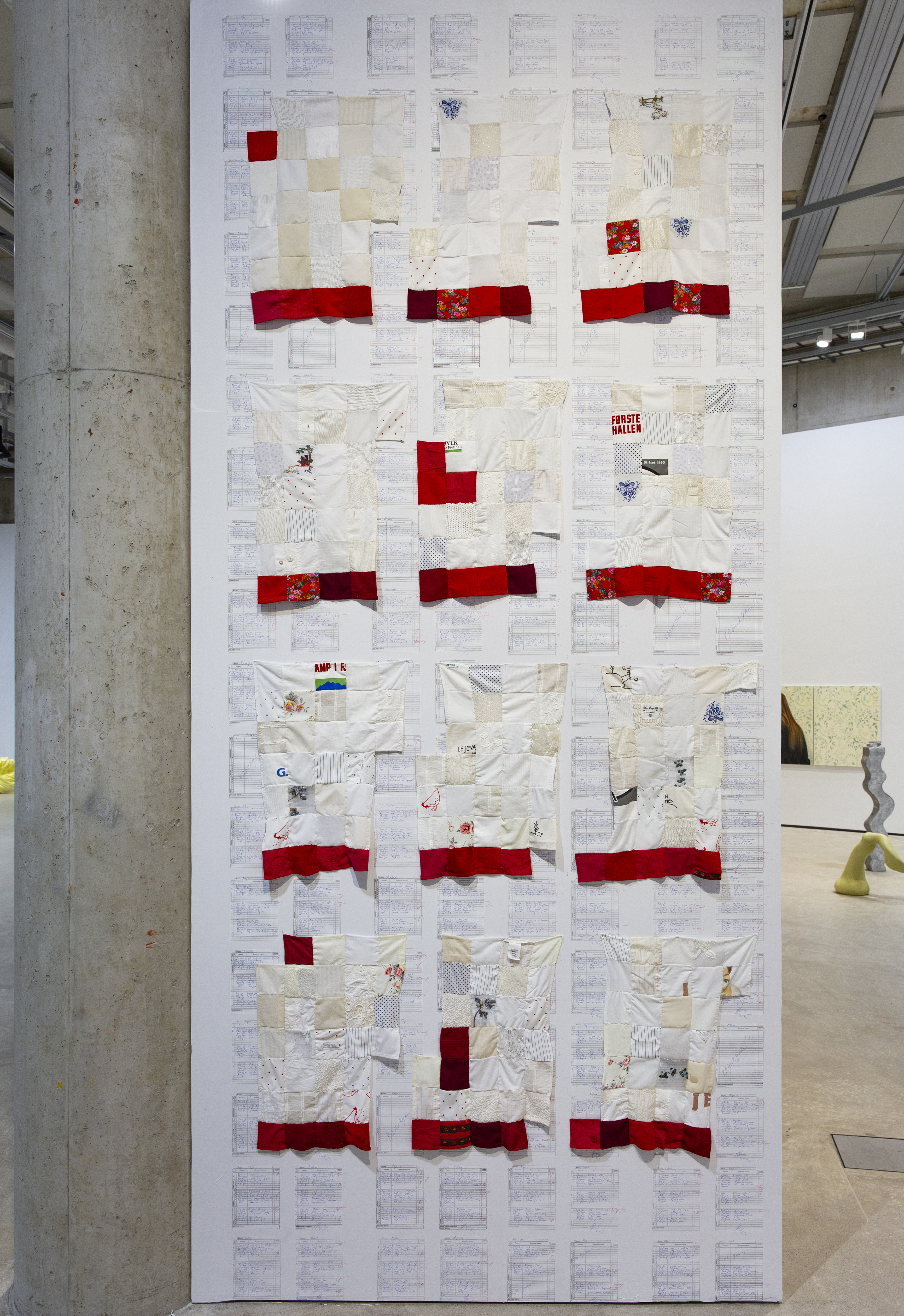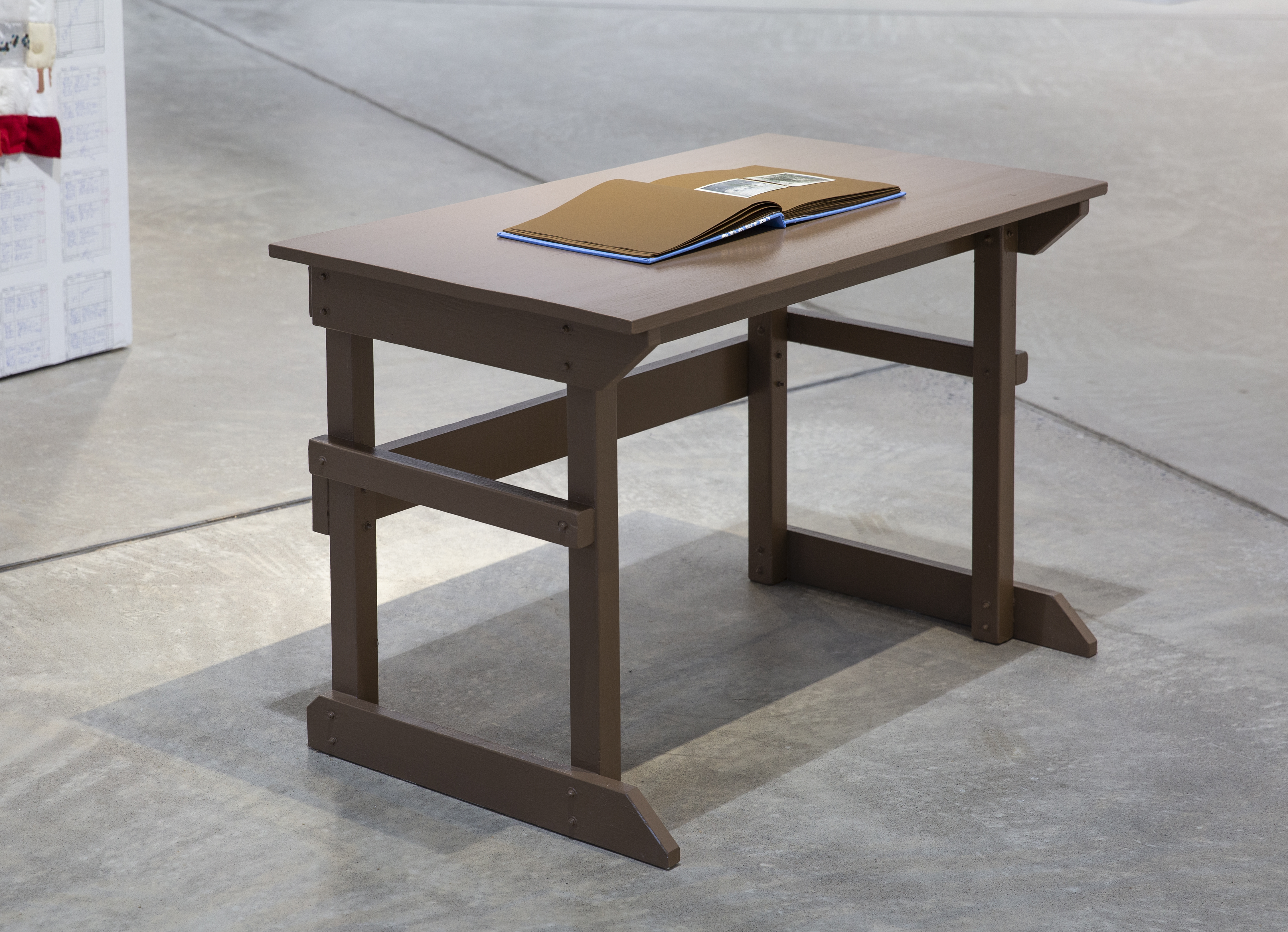

The Second-Hand Time is a project that examines the perception of time. Like many other children in the Soviet Union, the artist perceived time through the visualisation of time in the school diary. The first part of the installation presents a wallpaper with a typical school diary pattern. Every diary spread represents a six-day week filled with the names of the school subjects, homework, assessments, and teachers’ comments.
The second piece of the work is composed of textile elements that represent a full calendar year. Each tapestry is a particular month, and the months are presented in their respective order. The actual calendar of 1991, the year of the dissolution of the Soviet Union, was taken as a model for this tapestry. The third part of the installation is a photo album. All the pictures are from the artist’s family photo archive, but the people in the photos are unknown. The family members who used to know them have already passed away.
All these components are made by hand: the wallpaper is a silkscreen print filled with handwriting, the textile is hand-stitched, every square is cut from recycled material, and the photo album is made in the traditional hand-sewn bookbinding technique. The album, in turn, is displayed on a school desk made in the shape and colour of standard late soviet school furniture.
